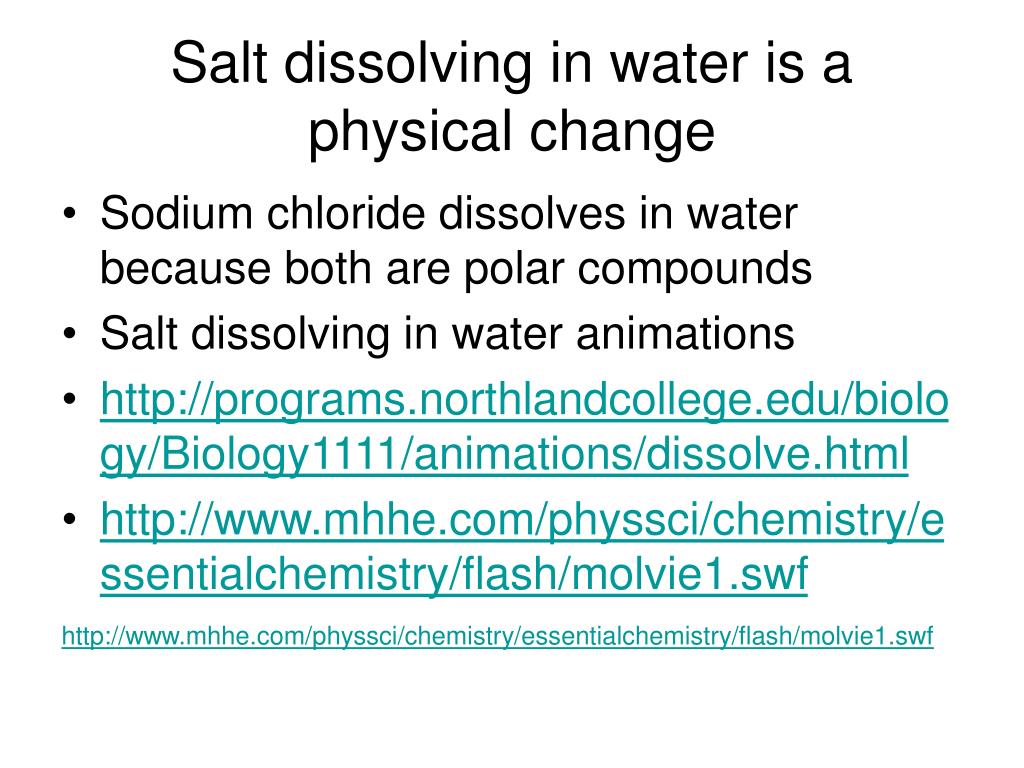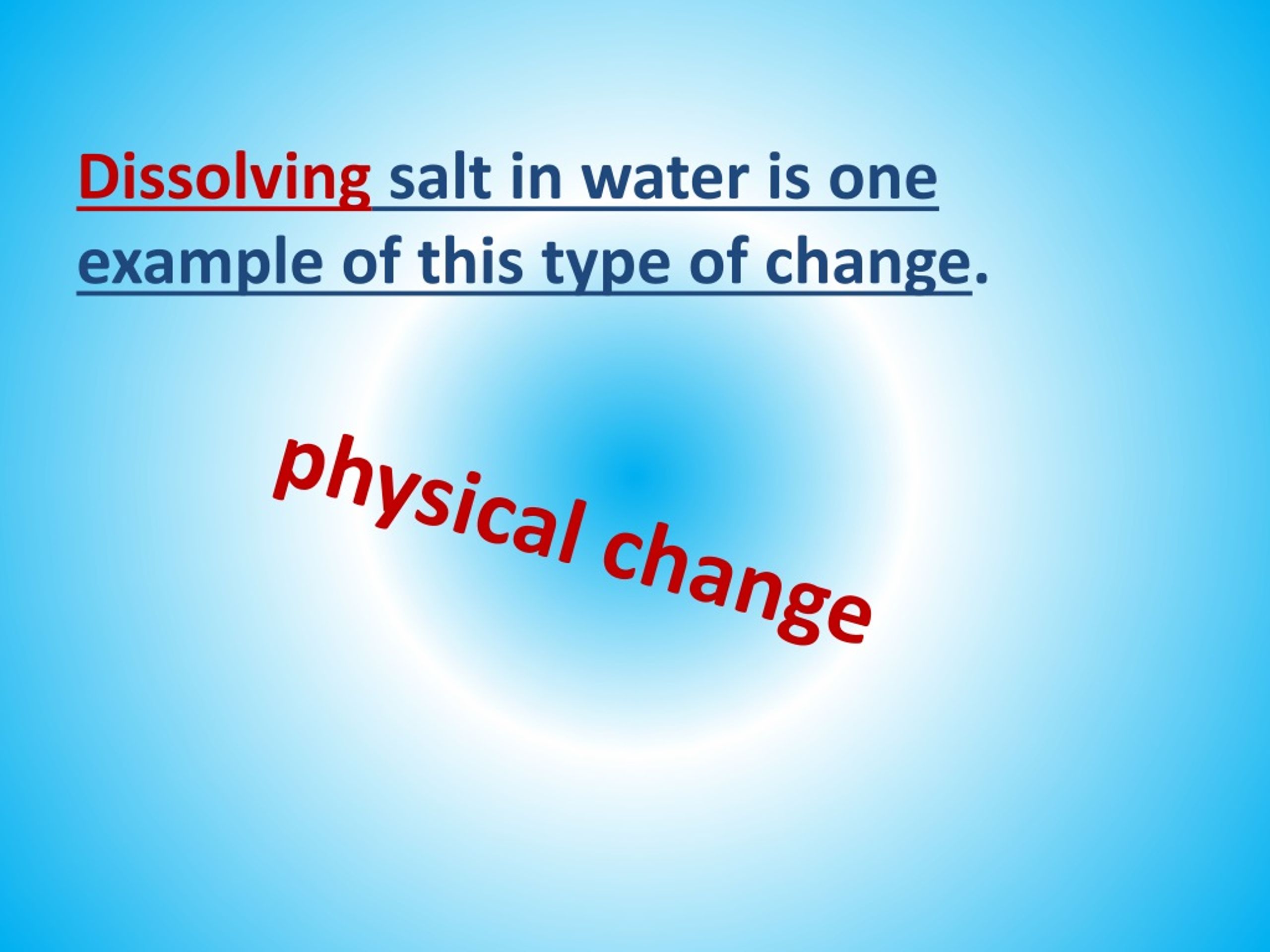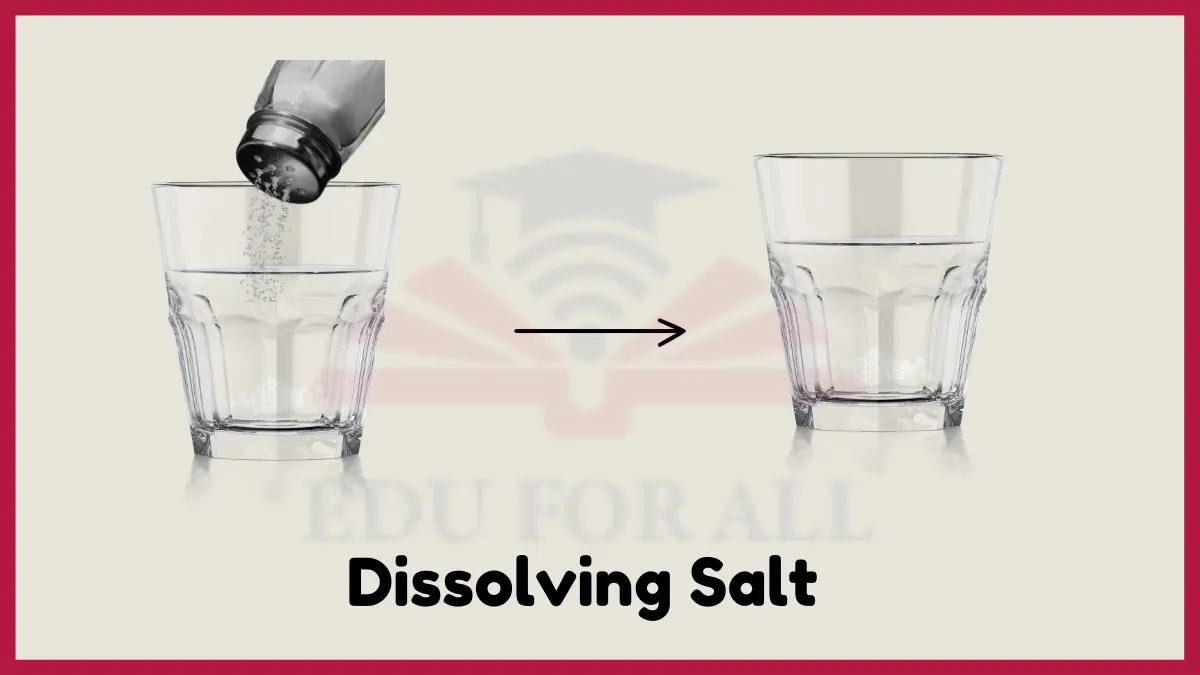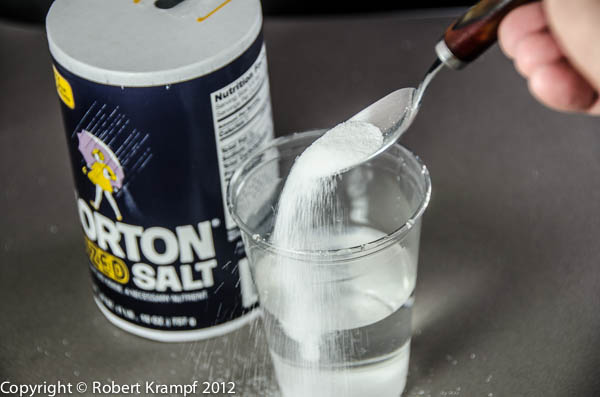Is Dissolving Salt In Water A Physical Change

The simple act of dissolving salt in water, a common occurrence in kitchens and laboratories alike, sparks a fundamental question: Is it a physical change or a chemical one? The answer, while seemingly straightforward, unveils the nuances of how we define and classify transformations of matter.
This article delves into the science behind dissolving salt in water, examining the processes at a molecular level. We will explore the arguments for both physical and chemical changes, ultimately clarifying why dissolving salt is primarily considered a physical change, albeit with chemical interactions at play.
Defining Physical and Chemical Changes
To understand the nature of dissolving salt, it's crucial to distinguish between physical and chemical changes. A physical change alters the form or appearance of a substance but doesn't change its chemical composition. Examples include melting ice, boiling water, or cutting paper.
Conversely, a chemical change results in the formation of new substances with different chemical properties. This involves the breaking and forming of chemical bonds. Burning wood and rusting iron are classic examples of chemical changes.
The Dissolving Process: A Closer Look
When salt (sodium chloride, NaCl) is added to water (H2O), the water molecules surround the salt crystals. Water, being a polar molecule, has a slightly positive end (hydrogen) and a slightly negative end (oxygen). These charged ends are attracted to the positive sodium ions (Na+) and the negative chloride ions (Cl-) in the salt crystal.
This attraction, known as solvation, overcomes the electrostatic forces holding the sodium and chloride ions together in the crystal lattice. The salt crystal dissociates, and individual Na+ and Cl- ions are dispersed throughout the water, each surrounded by a shell of water molecules.
It's important to emphasize that the sodium and chloride ions still exist. They have not been transformed into new substances. They are merely separated and surrounded by water molecules.
Arguments for a Physical Change
The primary reason dissolving salt in water is considered a physical change is because the chemical identity of the salt and water remains unchanged. The mixture can be separated through physical means, such as evaporation.
If the water is evaporated, the salt will revert to its original crystalline form, demonstrating that no new chemical substances have been created. This reversibility is a key characteristic of physical changes.
Considering Chemical Interactions
While the overall process is physical, there are undoubtedly chemical interactions occurring. The solvation of ions by water involves the formation of ion-dipole interactions, which are a type of chemical bond.
These interactions release energy (heat of solution) and can affect the properties of the solution, such as its conductivity and boiling point. However, these interactions do not lead to the formation of new chemical compounds in the traditional sense.
It's also worth noting that the ions in the water are now hydrated, meaning that they have water molecules chemically bonded to them. This, in itself, is a weak chemical reaction.
The Significance of Classification
Classifying changes as physical or chemical is not merely an academic exercise. It has practical implications in various fields, from chemistry and physics to environmental science and cooking.
Understanding the nature of these changes allows scientists to predict and control chemical reactions, develop new materials, and assess the impact of various processes on the environment. In cooking, for example, understanding that dissolving salt won't change its chemical nature is essential for seasoning food correctly.
Impact on the Audience
For the general audience, understanding the difference between physical and chemical changes provides a deeper appreciation for the world around them. It encourages critical thinking and a scientific perspective on everyday phenomena.
It shows us that seemingly simple processes like mixing sugar into coffee involve complex interactions at the molecular level. This understanding can empower individuals to make more informed decisions in their daily lives, from cooking to cleaning.
Conclusion: A Physical Change with Chemical Undertones
In conclusion, dissolving salt in water is primarily classified as a physical change because the chemical identity of the salt and water remains unchanged, and the process is reversible. While chemical interactions occur during solvation, they do not result in the formation of new chemical substances.
This example highlights the importance of understanding the nuances of scientific classifications and the complex interactions that occur even in seemingly simple processes. As such, understanding the physical and chemical changes become important.


















